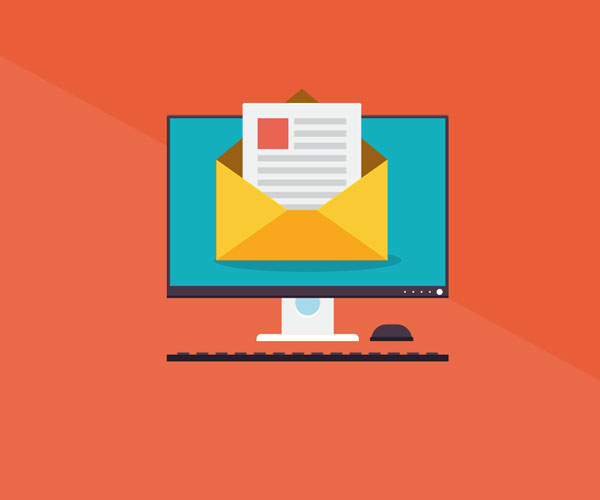
How to create an engaging welcome email sequence
Making a new customer feel welcome is a task best done quickly and thoroughly.
While that can be easy to do in person, nurturing someone and welcoming them into a digital space through writing can be tricky.
That’s where a welcome email sequence comes into play!
Emails have been the preferred way to reach customers directly for decades now and it’s no wonder why with the following statistics.
Recent studies show that email has an insane ROI.
For every £0.83 spent, marketers say they get £34.92 back.
This is likely why 78% of them say email is a major part of their success. Even with all of the new social media platforms and marketing apps, email remains relevant.
So, how do you leverage the success of emails to reach your new customers?
By carefully crafting a welcoming email sequence that makes them feel seen and appreciated from the first “hello.” We’ll show you how.
Get to know the buyer’s journey
If you’ve read much about marketing, you’ve likely heard of the buyer’s journey.
This is the path that one takes from realising they have a need to making a purchase to satisfy said need.
You should get to grips with the following 3 stages so that you can identify where a lead may be when they come into contact with your emails.
Let’s take a look.
- The awareness stage:
This is when the buyer realises that they have a pain point or problem that needs to be addressed. They are determined to do something about it and then move into the next stage. - The consideration stage:
In this stage, the buyer is considering their options for fixing their problems. They’re researching solutions and companies that provide the solution. It’s more than likely that they’re weighing up the benefits of choosing one over another. - The decision stage:
Finally, the buyer has made up their mind about what solution they’re committing to and which provider they’ll be purchasing from. The decision has been made.
Having an understanding of each of the stages and where your reader sits allows you to craft messaging that speaks directly to them. It’s all about speaking to them in a way that matches their current position and relationship with your brand.
Then, you’re able to walk them through the next phase until they’ve reached the decision to make a purchase with you.
For example, if they’re in the consideration stage, you may want to offer them a discount or some kind of incentive that makes choosing you more attractive than your competitors. Catch our drift?
Writing the best welcome email sequence ever
Whenever you set out to write a new email sequence, keep the following list handy.
Every script should include these key components in order to engage your reader and encourage them to take action.
As you’re putting them into practice, you should tweak them to fit your brand and the buyer’s journey as needed.
Subject lines matter
Before you start writing the body copy of your email, you’ll need to spend a decent amount of time and effort on your subject line.
While short, it’s mighty.
A subject line acts as a gateway to the buyer’s commitment to your company.
It needs to grab the reader’s attention and pique their interest enough to open your email. And you have only a short space to do it.
As with many components of copywriting, success comes from trial and error. What works with one demographic may not work with another. As such, consider split testing your subject lines.
You also need to take your data seriously. There’s little point in agonising over subject lines when you don’t check the metrics after it’s sent.
While the success of your subject lines relies on testing and discovering what captures your receiver’s interest, there are a few tried-and-tested techniques that companies rave about.
Using personal names, for example, and asking questions seem to spike open-rates.
For example, “Jane – have you heard about our guest speaker?”
More than a number
While your email campaign is being sent to a large number of people, you never want your reader to feel like a number.
Find ways to make them feel seen and appreciated as an individual.
Start your emails with their first names, include a comment about their past purchases or how they signed up for your campaign.
Give the impression that you sat down and wrote to them directly even if that’s not quite the case.
Luckily, with many email marketing platforms, they have smart fields that can personalise messages based on individual data. This includes buying history, interaction with other emails, and even birthdays.
Segment your list
As you build your email list, you should be segmenting it based on where the subscribers are at in their buyer’s journey.
You should have a segment for new subscribers that will receive a welcome sequence.
Another segment could be for established customers that are getting occasional emails with product updates and announcements.
You want to communicate with them based on their interaction with your brand and where they sit in the buyer’s journey.
You don’t want to, for example, try to sell your lead a product they’ve already bought. So, segmentation comes in handy and allows for more targeted messaging.
Include a call-to-action in every email
Every single email that you write should include an obvious call-to-action (CTA) that lets the reader know what you want them to do next.
Do you want them to sign up for your course? Maybe you’re encouraging them to schedule a 1:1 call with you?
Whatever it is, make it obvious with a link or button so they’re not left wondering what to do.
It’s best to determine your call-to-action before you start writing. You should never write an email for the sake of it.
Every individual email needs to feed into your overall strategy. If you don’t know what you want them to do and the email feels empty, it shouldn’t be sent.
Check for typos
We know it’s tempting. After you’ve been writing for hours, it can be all too easy to shut off and never look at it again.
Please – with everything we’ve got, we’re begging you – don’t skip this step.
Before you publish your campaign, proofread every email and subject line.
And do it multiple times.
The last thing you want to do is send an email with a typo or grammar mistake that makes you look lazy and unprofessional.
Plus, nowadays we have little excuses for not checking our work. Apps like Grammarly make it as easy as clicking a few buttons.
Plus, most word processors and email providers have spell-check built-in.
So, take the advice of your English teacher: check your work!
Automate and use conditional formatting
The beauty of a welcome sequence is that it can be automated.
As your list grows, it’s simply impossible to send individual emails as and when they’re needed.
Even with a smaller list, it’s time-consuming, and you’re bound to forget an email or two.
So, when you’ve finished your email script, automate it.
You’re able to add various triggers to emails, and use conditioning formatting to target different people at different phases within your welcome sequence.
Say, for example, your first email delivers a free guide. You could create two separate emails as the following message. One asks why they’ve yet to open it, and the second asks what they thought of it. Conditional formatting can then be used to deliver the right message to the right people.
Greatest email writing template
We don’t want you spinning your wheels and getting stuck in analysis paralysis.
So we’re sharing our basic (but conversion-heavy) welcome email sequence template with you. Use the prompts, flesh them out with your brand’s details and product information, and hit “send”.
Email 1: Here’s Your Freebie
Your first email to the new subscriber should be a quick “thank you for subscribing” and delivering the lead magnet (or “freebie”) they’ve signed up for.
You should set expectations in this email, letting them know when they’ll be hearing from you. Try to keep this email short and sweet. You don’t want to put them off with the first email they read.
And you absolutely should not try to sell anything in this message.
Email 2: Introduce the team/brand
This email is your opportunity to introduce yourself and the key players of your team (if there are any).
Don’t be afraid to scatter the email with a few photos. Remember, people buy from people. People trust people. To build that know-like-trust factor, it’s important that your reader feels like you’re a real human being.
Email 3: Tell a story
We’re hard-wired to respond and react to stories.
In the world of business, it’s a key player of sales techniques.
According to marketers, you should have 3 foundational stories about your business that you can use to engage people. The third email of your welcome sequence is a great time to tell a story.
Tell the tale of your brand’s conception, focusing on your “why”. This provides a deeper sense of relatability between you and your reader.
Email 4: Social proof
The basics of the psychology of persuasion splits a decision into 3:
- Ethos
- Pathos
- Logos
You need to strike a balance between the three. Using social proof – testimonials, reviews, screenshots, etc – appeals to pathos. It’s all about “if it worked for them, it can work for me”.
So, let your customers sing your praises for you.
Share 2-3 testimonials from customers of different backgrounds so a wider group of readers can relate to them.
Your goal is for the reader to be able to envision doing business with you and trusting that your product could be a solution to their problem.
Email 5: Present a low-cost, evergreen offer
A welcome sequence is not a sales sequence.
However, it should end in either a free or low-cost offer.
This offer should be evergreen. As your automated welcome sequence will work 365 days per year, there’s little reason to adjust it all if the data proves it’s working.
However, this offer should funnel your subscribers into a different segment. Should they take the offer, the next step up is your higher-costing product or service. If they don’t, you can place them in a “downsell sequence”.
This email shouldn’t be too long, and should use soft-selling techniques.
Email 6: Reminder
The final email in your welcome sequence ties beautifully into the previous email. If the reader has taken action, they won’t receive this message, as they’ll have been sifted into a new segment for a new sequence.
However, if they’ve yet to take the action, this email presents a final opportunity to push for conversion.
A welcome sequence does it for you
Many new business owners never get round to writing a welcome sequence. Why? Because they’re afraid of utter overwhelm.
With so many elements to keep in mind, we do empathise. But the truth is, once you’ve created your welcome sequence, it’ll provide an intimate space between you and your reader that lasts as long as you want it to.
A welcome sequence, if done right, can convert subscribers to sales time and time again.
So, it’s truly worth the hassle of working some wordy magic. Trust us on this one. You’ll never doubt us again.

Liz Slyman
Liz Slyman has worked on campaigns for some of the biggest brands you know––and breakout brands that you WILL. As the founder and CEO of an award-winning copywriting agency, Liz turns over a decade of copywriting experience into copywriting courses, coaching, tools, and resources for new and established copywriters.


